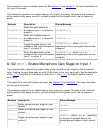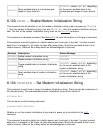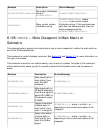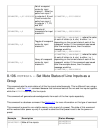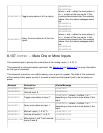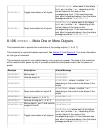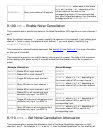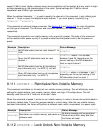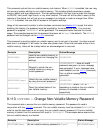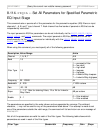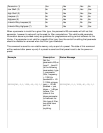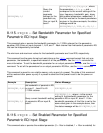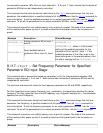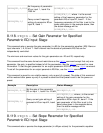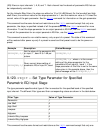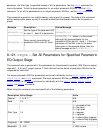
This command controls the non-volatile memory lock feature. When NVLOCK is enabled, the user may
not save any system settings to non-volatile memory. This includes global parameters, presets,
macros, labels, and logic assignments. The lock applies whether the user tries to make the changes
via RS-232, front panel, logic inputs, or any other method. The user will still be able to query all the
features of the device, but will get an error message if an attempt is made to change them. When
NVLOCK is disabled, the user has full access to the system settings.
Usage of this command is similar to other boolean commands (see
Section 6.1) except that when
disabling this feature, the password must be supplied for the command to work. If an incorrect
password is supplied, 'ERROR#005' will be generated. The examples below illustrate the correct
usage. The examples assume that the password has been set to 'aspi' (the default). The NVLOCK
password can be changed via the
NVPSWD command.
This command is saved to global non-volatile memory and is not part of a preset. Its value is saved
each time it is changed. It will retain its value after power-down. Since this command writes to non-
volatile memory, there will be a delay before an acknowledgment is returned.
Example Description Status Message
S01NVLOCK1
Lock the non-volatile memory to
prevent users from changing the
settings.
S01NVLOCK1
S01NVLOCK0,yumyum
Attempt to unlock the non-
volatile memory by using an
invalid password.
S01ERROR#005 -- since an invalid
password was given, an error message
was generated. If error messages have
been disabled (via the
ERROR command),
then no status message will be
generated.
S01NVLOCK0,aspi
Unlock the non-volatile memory
by using the correct password.
S01NVLOCK0
S01NVLOCK?
Query the locked status of the
non-volatile memory.
S01NVLOCKx , where x is 0 or 1
depending on whether the non-volatile
memory is unlocked or locked,
respectively.
8.113. NVPSWD -- Change Non-Volatile Memory Password
This command sets or queries the non-volatile memory password. This password is used in
conjunction with the
NVLOCK command. The non-volatile memory must be unlocked ('NVLOCK0') in
order to use this command to set or query the non-volatile memory password. If the non-volatile
memory is locked, then this command will result in 'ERROR#004'. The examples below assume that
the non-volatile memory is unlocked.
Example Description Status Message
S01NVPSWDlemur
Set non-volatile memory password to 'lemur'.
S01NVPSWDlemur



